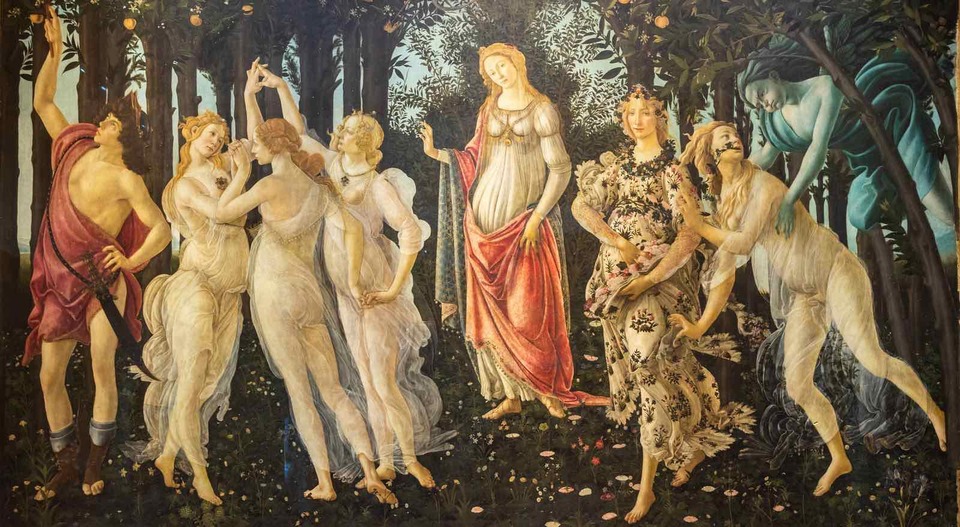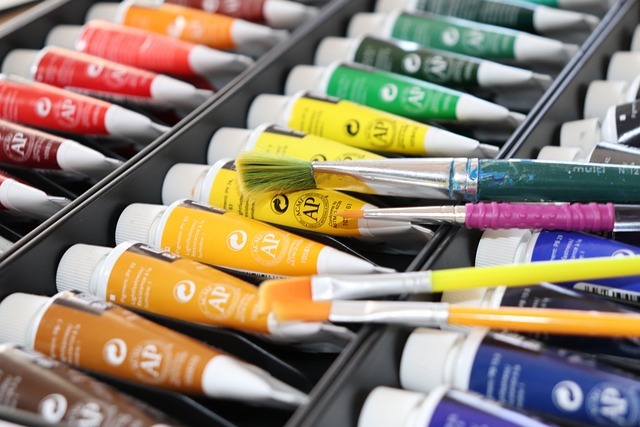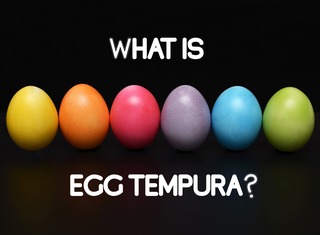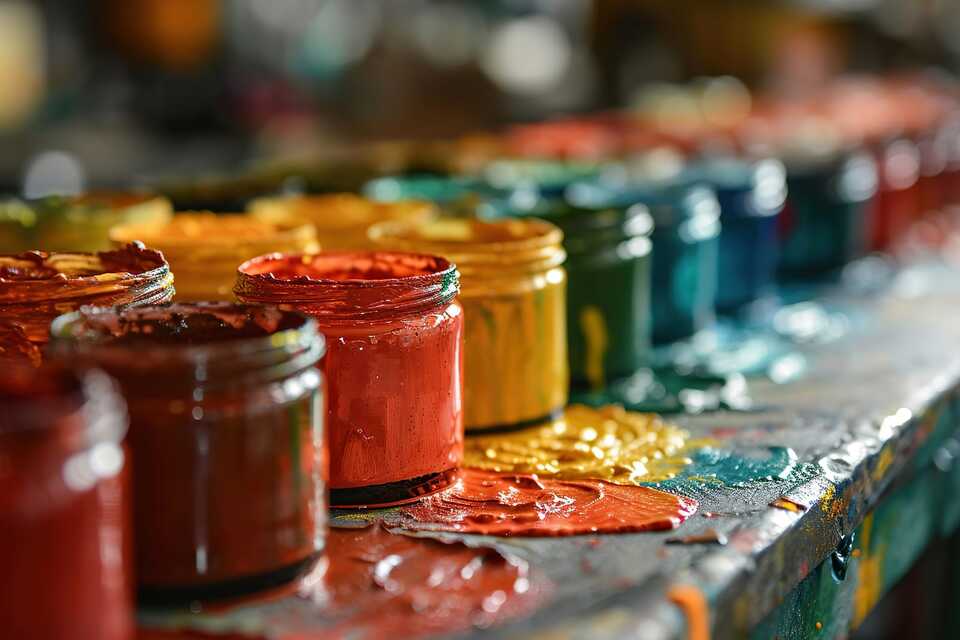What's So Interesting About Egg Tempura?
Egg tempera is a painting medium that dates back to ancient times and is known for its unique qualities, durability, and versatility. Its origins can be traced to prehistoric art, where early humans used natural pigments mixed with egg yolk to create vivid and enduring images on cave walls.
Fast forward to the early Renaissance. Egg tempera was the medium of choice for artists like Sandro Botticelli, who famously used it in masterpieces such as "The Birth of Venus." Even today, egg tempera remains a cherished medium for artists seeking its luminous, delicate finish and its precision.
What is Egg Tempera?
At its core, egg tempera is a paint thats made by mixing finely ground pigments with a binding medium of egg yolk and water.
The term "tempera" is actually derived from the Latin word "temperare," which means to bring to a desired consistency. Which aptly describes the process of creating egg tempera paint, where the artist carefully tempers the pigment mixture to achieve the perfect texture and flow.
One of the remarkable qualities of egg tempera is its resilience. Unlike oil paints, which can darken or turn yellow over time due to oxidation, egg tempera paintings maintain their original brightness and clarity.
The emulsion formed by the egg yolk creates a protective surface film that shields the painting from humidity and temperature changes. This makes egg tempera a stable and long-lasting medium that is capable of preserving the artist's work for centuries.
The Unique Properties of Egg Tempera
Fast Drying Time
Similar to acrylic paint, egg tempera dries quickly, becoming water-resistant almost immediately. This allows artists to layer paint without disturbing the underlying layers, making it ideal for creating detailed, intricate designs. The fast drying time also enables the artist to work quickly, building up layers of colour and texture.
Transparency and Opacity
Egg tempera is versatile in its application. It can be applied in thin washes, like watercolour, to achieve transparent, luminous effects. These washes allow light to pass through the layers, creating a glowing, vibrant quality. When applied more thickly, egg tempera becomes opaque, similar to gouache, offering a more solid and substantial appearance. This range from transparency to opacity gives artists great flexibility in their work.
Colour Mixing and Layering
Unlike watercolours, which can blend and bleed into each other, egg tempera layers remain distinct. This allows for a technique called "glazing," where layers of different colours are applied on top of each other to create complex hues and visual depth. For example, a yellow wash over a blue wash will produce a green effect, but the layers of yellow and blue remain visible, adding a unique vibrancy and dimension to the colour.
Durability
Egg tempera's natural emulsion forms a hard, durable paint film that resists cracking and flaking. It's less prone to the changes that affect oil paints over time, such as darkening or yellowing. It's interesting to know that the colour of the egg yolk has no yellowing effect on the colour of the paint. In fact, egg tempera is known to be noticeably less yellow than oil paint colours.
Surface and Finish
Egg tempera paintings have a matte finish once dried. However, they can be burnished or polished with a smooth, hard object like a polished agate stone or spoon to add brilliance and depth, enhancing the painting's transparency. Additionally, varnishing an egg tempera painting can give it the appearance of an oil painting, providing a glossy finish.

Interesting Facts About Egg Tempera
- Historical Significance: Egg tempera was widely used by artists during the Byzantine and Early Renaissance periods before oil painting became dominant. It was the primary medium for panel painting and was favoured for its fine detail and permanence.
- Long-Lasting Artworks: Many egg tempera paintings from the Renaissance period have survived in excellent condition due to the medium's resistance to environmental changes and its non-yellowing properties.
- Limited Colour Palette: Historically, egg tempera artists used a limited palette of natural pigments. This limitation led to the development of sophisticated techniques for mixing and layering colours to achieve the desired effects.
How to Make and Use Egg Tempera Paint: A Tutorial
Creating your own egg tempera paint is a rewarding process that connects you with a tradition spanning thousands of years. Follow these steps to start painting with this classic medium:
Materials Needed:
- Fresh egg yolk
- Distilled water
- Finely ground pigment powder
- Small jar or container
- A soft brush or palette knife
- Glass or ceramic palette for mixing
- Optional: Alcohol (for pigments that don't mix easily with water)
Step-by-Step Guide:
- Prepare the Pigment Paste: Start by making the pigment into a paste. Place a small amount of pigment powder on a glass or ceramic palette. Add a few drops of distilled water to the pigment and mix it with a palette knife until it forms a smooth, thick paste. If you're using pigments like alizarin crimson or Prussian blue, which don't mix well with water, add a few drops of alcohol to help create a consistent paste.
- Prepare the Egg Yolk Binder: Crack a fresh hen's egg and separate the yolk from the white, keeping only the yolk. Roll the yolk gently in your hands or place it on absorbent paper to dry the surface. Once the yolk is dry to the touch, puncture the yolk sac with a knife over a small jar and let the liquid yolk run out, leaving the membrane behind. Add an equal amount of distilled water to the yolk in the jar and mix well to create the binder.
- Mix the Paint: Combine the pigment paste with the egg yolk binder. Use a palette knife to blend them together until the paint reaches the consistency of thin cream. The amount of pigment added can vary depending on the desired colour intensity and consistency.
- Applying the Paint: Use a soft brush to apply the egg tempera to your surface. Begin with thin layers, gradually building up to achieve the desired opacity and effect. The paint dries quickly, so you can add additional layers without disturbing the ones underneath. Experiment with different brushstrokes and techniques to explore the medium's versatility.
- Burnishing and Finishing: Once your painting is complete and dry, you can burnish the surface with a polished agate stone or spoon to add depth and shine. This process enhances the colours and gives the painting a more vibrant and reflective surface. Alternatively, you can apply a varnish to protect the painting and add a glossy finish.
Egg Tempera Variations
Egg-Oil Emulsio
Mixing egg yolk with a small amount of oil (like linseed oil) before adding the pigment creates an egg-oil emulsion. This mixture dries more slowly, offers more flexibility, and is less prone to cracking. It produces a glossier finish and can be used on more flexible supports like canvas or paper.
Ready-Made Egg Tempera Paints
For convenience, ready-made egg tempera paints are available in tubes from art supply stores. These can be thinned with a bit of distilled water and used directly from the tube, saving time and effort in preparing the paint.
The "Lazy" Tempera
This method involves mixing the whole egg with linseed oil and pigment in equal portions. While more straightforward to make, this egg-oil emulsion dries to a hard but slightly cloudy finish. It's a good option for those who prefer a straightforward preparation method and a softer, more muted look.

Conclusion: Egg Tempera
Egg tempera is a medium that offers a unique combination of durability, vibrancy, and versatility. Its quick drying time and ability to hold fine details make it ideal for artists who value precision and clarity.
Whether you mix your own paints from scratch or use ready-made options, working with egg tempera connects you to a rich artistic tradition. Explore its possibilities, experiment with layering and burnishing, and let this timeless medium bring a luminous, ethereal quality to your art.
A link for those interested in wetting agents https://coatings.specialchem.com/supplier/bruggemann where you will find a technical datasheet available for download
Interested in other types of artists mediums? Check out my articles on:

